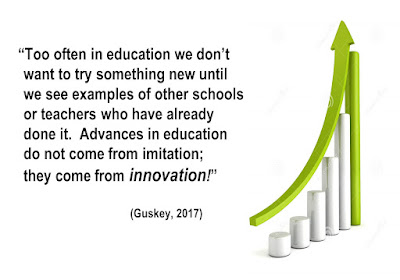Today is a significant milestone as I celebrate my 100th blog post! Looking back to where it all began a decade ago, with the encouragement of my friend Matt Esterman, fills me with gratitude. I started this journey with a flurry of content, but during my doctoral years, the frequency took a hit – except when Prof Sahlberg nudged my cohort to pen Op-Eds located in April & May 2019. (shoutout to Pasi for the push!). Today, I've decided to take a stroll down memory lane by revisiting my previous blog posts, including a reflective piece from 2020. For me, this blog serves as more than just words on a screen; it captures snapshots of my evolving thoughts, beliefs, and experiences, akin to entries in a personal diary. I analysed my writing in search of recurring themes and common threads and discovered change, connection, continuous learning, collaboration, and coaching.
Reflecting on my journey, I remember my first entry about not feeling smart enough for university and the apprehension I felt before hitting the publish button. The level of vulnerability required felt overwhelming, as I lacked the confidence to share my thoughts without seeking approval from others. But over time, I've grown in confidence, addressing complex educational issues such as I'll ride with you, More than Thanks, and teacher retention, naturally intertwining my personal experiences with my teaching identity.Identity isn't static; it's a complex tapestry woven from personal and professional experiences, qualifications, personality traits, and values. Context and role responsibilities also play a significant role in shaping who we are. As I've navigated through different experiences and contexts over the years, I've watched my identity shift and evolve like a chameleon adapting to its surroundings. Change is inevitable, and it's only natural that our identities evolve along with us.
Connecting with others has always been a cornerstone of education. The post titled "So, what's in it for you?" struck a chord with many, and for good reason. Back then, Twitter was the driving force behind the growth of TeachMeets, fostering learning and forging connections among schools, leaders, and educators. As a moderator of Twitter Chats, such as #SatchOC, I witnessed firsthand the power of these digital platforms in facilitating meaningful exchanges and professional growth. Building relationships and cultivating a professional learning network (PLN) became more than just buzzwords—they were essential elements of thriving in the educational landscape. Whether it was connecting with academics or fellow educators, whether it involved climbing a bridge or venturing to professional learning opportunities overseas, the quest for knowledge and camaraderie knows no bounds.
From highlighting the invaluable guidance of coaches in my life to reflecting on classroom observations, the journey of growth and development was a constant thread. One of the highlights of this journey was my Fellowship to the US, which I documented in eight captivating blog posts under the hashtag #EdVentures, back in June and July of 2015. These posts and others chronicle my professional growth and showcase how I seamlessly blended work with play, blurring the lines between the two.

My doctoral journey has been filled with unexpected challenges and pleasant surprises, yet it has been a defining chapter in my life characterised by resilience, perseverance, and ultimately, achievement. What's truly remarkable is how my blog posts have evolved into a visual representation of this professional growth journey, aligning closely with the topics and themes explored in my thesis. It's fascinating to observe how the concepts I pondered in my early blog entries, such as coaching, self-determination, proving or improving and the delicate balance of confidence and humility, resonate deeply with the findings of my academic research. This alignment is particularly noteworthy considering it predates the publication of Adam Grant's "Think Again" and his discourse on confident humility. What initially may have appeared as simple musings have now transformed into tangible reflections of my evolving beliefs and values.
Thanks for reading,

























